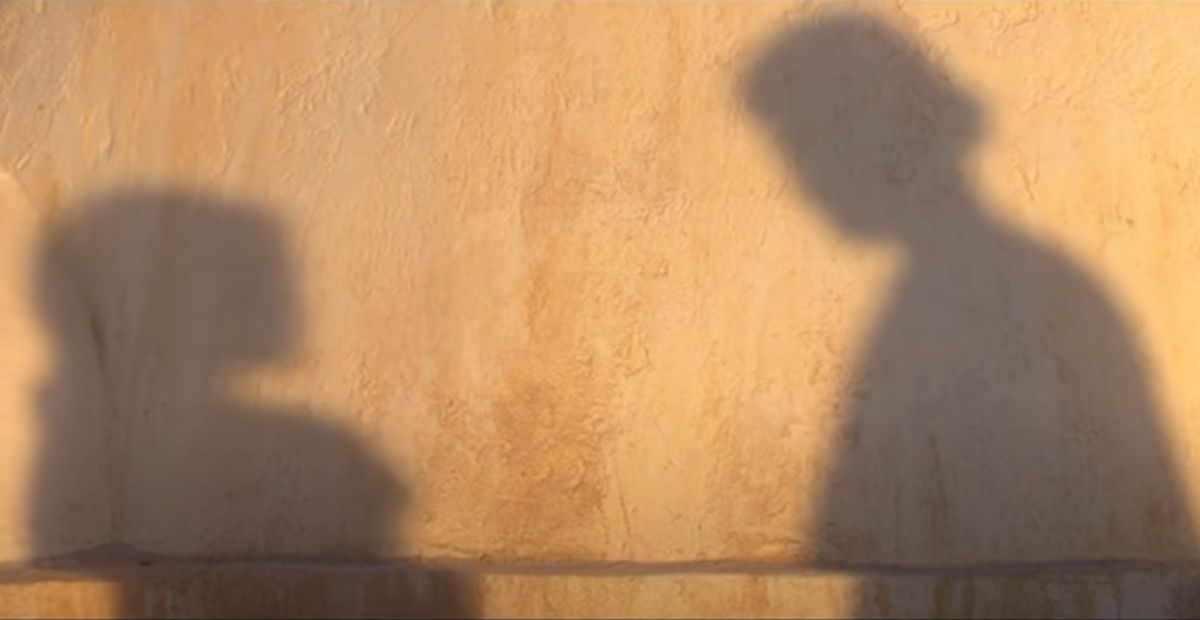We all know the scene when Luke is pondering life staring off into the two suns in the sunset on Tatooine. Those two suns make for a hot, rugged, desert planet.
We would expect that those two suns would also provide two shadows, but they don’t.
Read on to find out the reason why a planet with two suns only casts one shadow.
Two Suns on Tatooine
This iconic scene in A New Hope conveys Luke’s sense of longing for something more than the desert wasteland of Tatooine.
We see a brighter lighter-colored sun above and to the left of a darker orange-colored sun. The scene is more well known for initiating Luke’s journey to becoming a Jedi, but it also makes us think about how a planet with two suns would work.
This recent scientific article indicates that a planet with two suns, such as Kepler-16b, would most likely be “extremely cold” if it had “two dimmer stars” instead of “our bright sun.”
These planets would have much brighter days and nights that vary in length with two different sunsets. Two suns would make for challenging conditions, even more so than Tatooine’s.
In Attack of the Clones, we see two suns working their way into the scene when Anakin meets with Padme before he searches for his mother.
This scene prompted some discussion over the shadows that appear against the dome home on Tatooine.
One point of interest was how Anakin’s shadow looks like Darth Vader’s. It turns out that similarity was accidental.
Another point of discussion concerns why we only see one shadow for each of them when Tatooine has two suns. We would perhaps expect two shadows for both Anakin and Padme.
Why Is There Only One Shadow With Two Suns?
One fan has commented that possibly only “one sun is in a position to cast their shadows” at that time, with another adding that the suns are setting and it is “likely one of them is already beyond the horizon.”
To explain why we only see one shadow could be because only one sun is shining on Anakin and Padme.
However, others from the above board contend that maybe the “suns are so close together” and far away that they actually “act as 1 light source” to make one shadow.
Another post contributes that the shadow from the two suns would probably be “fuzzy” because of the penumbral degree length and because the two of them are not close to the wall.
So, we don’t have a clear-cut answer after all. We may have to recruit some other viewpoints to reach a consensus.
One commentator in this Star Wars discussion wrote that the binary suns on Tatooine “would have to be in different sectors of the sky to cast two shadows” and the planet closer to those stars.
Another post adds that the light of two suns “would simply overlap and make just one shadow,” assuming they were about equidistant from Tatooine.
In an astronomy discussion, another explanation posits that we would see “two half-shadows” on a planet with two suns with possibly “an overlapping part where no direct light reaches the ground.”
We can imagine Luke, Anakin, or Padme appearing in halves with a cross-section that is shadowed out.
Another commentator from the above discussion offers that we could see shadows “in two different directions” similar to when a person walks down a street at night with street lights that are set apart from each other.
In this case, the shadow effect would bounce Greedo two ways off the outside of the Cantina wall.
So, what is the answer? If we refer to Kepler 16b, the planet appropriately nicknamed Tatooine, yes, we would see two shadows if a person were standing on this planet.
The catch here is that we could not actually stand on it, though, because it is a gas giant with no solid surface. The visualization here, imagines instead that we are standing on a nearby moon.
Two Suns and Two Shadows
The discussion board responses provide solid reasons for why we only see one shadow of Anakin and Padme on a planet with two suns.
It could be the positioning of the suns at sunset, the distance of the suns from Tatooine, and an overlapping or blurred effect. If conditions were right, though, we would see two shadows on Tatooine and Kepler 16b.

